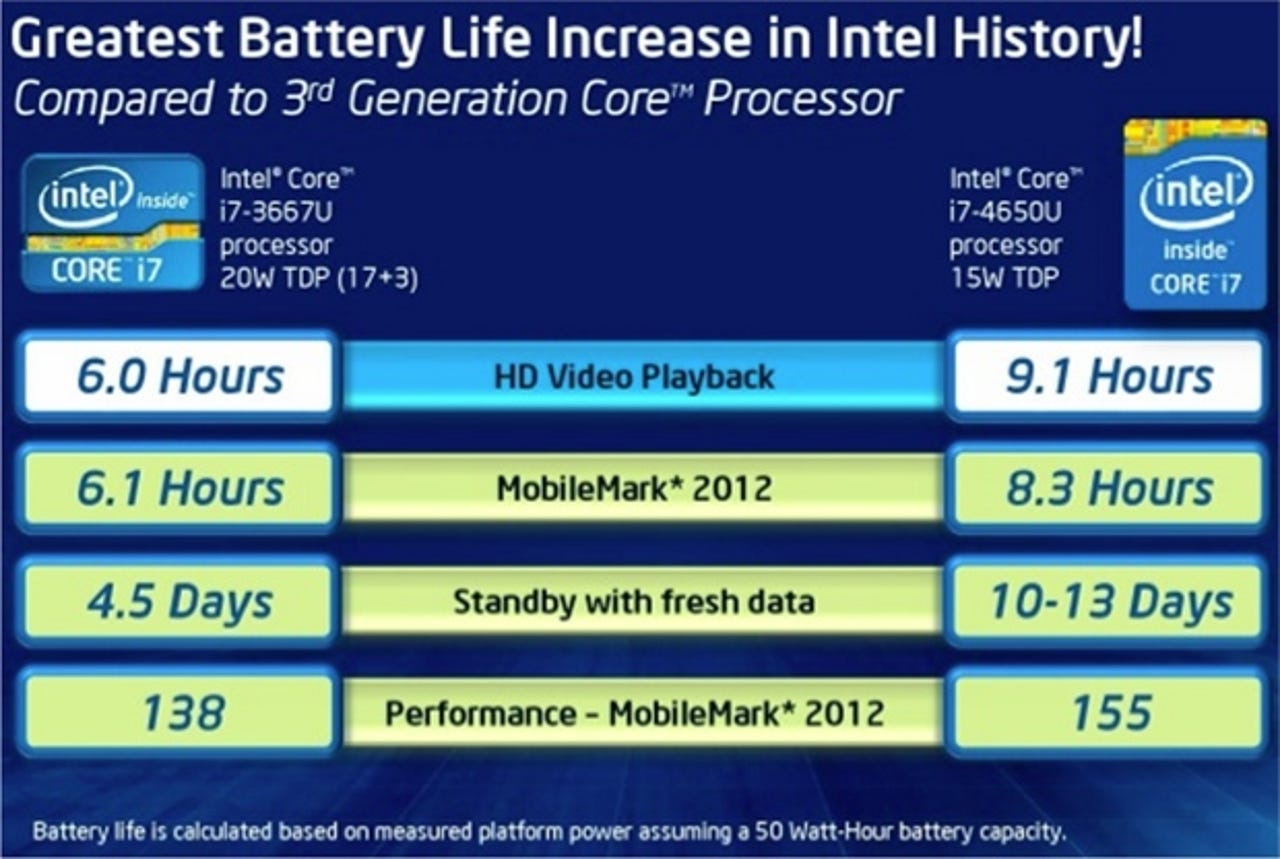Intel bets on better battery life as the killer next-gen Core feature

Details of Intel's next-generation Core processors – codenamed Haswell – are now out, and it's clear that where power was once king, power consumption is the new yardstick.
The new fourth-generation Core processors represent an interesting shift for Intel. Where once squeezing more GHz out of the silicon – or at least squeezing a better benchmark score from the hardware – was the key, now power consumption is the feature that Intel wants us to look at as it bets on the post-PC world.
And compared to the previous hardware, Haswell is leaps and bounds ahead in terms of squeezing more power per Watt.

While Haswell silicon is based on the same 22-nanometer 3D transistor architecture as used in Ivy Bridge parts, bit this time Intel has built power management directly into the processors, which allows precise control over the voltages based on load.
Desktops that are plugged direct into the mains don't directly benefit from the lower power consumption – the power saving only really becomes apparent if you run a lot of PCs or keep them on 24/7 – there is an indirect benefit in that the system runs cooler, which means they are quieter and more reliable.
The real benefits however, are for notebooks, hybrids, and post-PC devices such as tablets. This is where low power consumption really comes into play, helping to increase battery life, and keep the device cooler during use.
The U and Y variants of the Haswell processors are both designed for use in Ultrabooks, and the power consumption can be as low as 7W SDP (Scenario Design Point, a new reference designed by Intel to describe typical power usage scenarios).
Another Haswell improvement is thinness. The new designs will allow OEMs to build thinner devices without compromising on power.
Then there's the improved graphics processing power. The new processors, such as the Core i7-4558U is capable of delivering a pretty acceptable gaming experience for an Ultrabook processor.
Not only does the beefier GPU mean better gaming, but also better performance in other tasks, such as video rendering.
There are also a whole raft of other features and improvements, most of which are aimed at the mobile market.
It's clear that with Haswell, Intel's focus has shifted from the desktop and onto the mobile market.
Intel will formally launch Haswell on June 4, and you can expect all the big-name OEMs to be shipping devices powered by this silicon shortly afterwards.